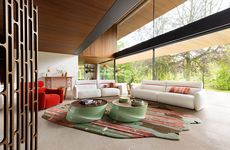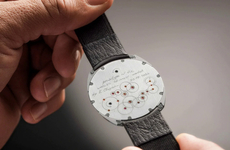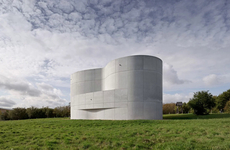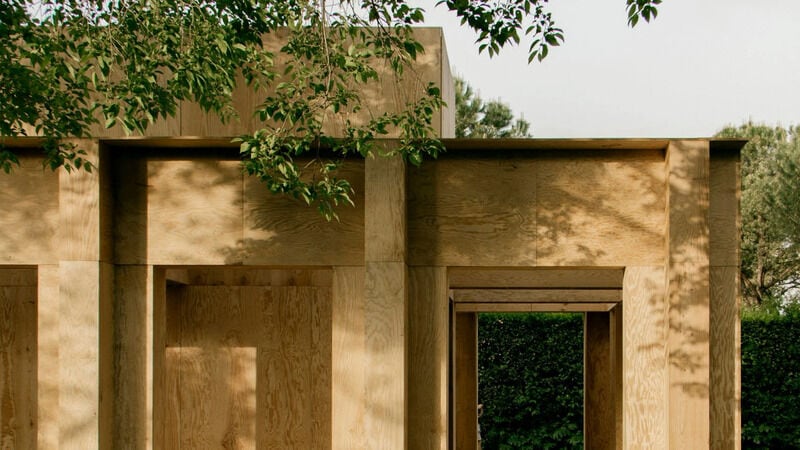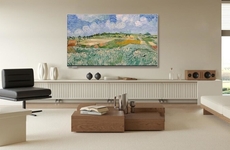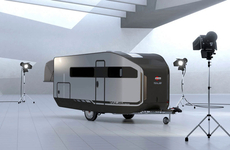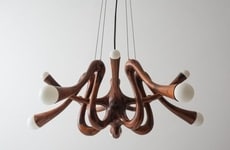
Pratique and Fanum Design the Forum des Vestiges Pavilion
Amy Duong — September 5, 2024 — Art & Design
References: fanum-architecture.fr & dezeen
French architecture firms Pratique and Fanum join forces to create the Forum des Vestiges plywood pavilion space. The two studios drew inspiration from the look of Roman architecture and the pavilion is nestled in the gardens of Rom'es Villa Medici. The two nodded to the ancient influence in order to encourage social interaction and prompt conversations, forming a place to exchange, debate, and socialize.
Pratique shares, "This cabin, with the appearance of a pavilion, finds its proportions and limits in the relationship it maintains with the garden, responding to the rigorous geometry formed by hedges. The project weaves a link with historical remains, reinterpreting them through a new materiality. The wooden columns, seeking to match the mass of the stone remains, draw an imposing monolith. [...] The project offers several uses, such as sitting alone in the columns or gathered around a table, but invites each user to invent new uses."
Image Credit: Gautier Baufils
Pratique shares, "This cabin, with the appearance of a pavilion, finds its proportions and limits in the relationship it maintains with the garden, responding to the rigorous geometry formed by hedges. The project weaves a link with historical remains, reinterpreting them through a new materiality. The wooden columns, seeking to match the mass of the stone remains, draw an imposing monolith. [...] The project offers several uses, such as sitting alone in the columns or gathered around a table, but invites each user to invent new uses."
Image Credit: Gautier Baufils
Trend Themes
1. Modern-roman Architectural Fusion - Merging contemporary materials with classical architectural elements to create unique, multipurpose social spaces.
2. Gardens as Social Hubs - Transforming garden spaces into gathering points that encourage community interaction and cultural exchange.
3. Adaptive Historical Inspirations - Leveraging historical architectural themes in modern designs to foster new social and functional applications.
Industry Implications
1. Architectural Design - Incorporating historical influences into modern architectural projects to enhance aesthetic appeal and functionality.
2. Urban Planning - Designing public spaces that blend natural landscapes with built environments to promote social cohesion.
3. Cultural Development - Creating spaces that draw from historical cultural elements to inspire contemporary community activities and interactions.
3
Score
Popularity
Activity
Freshness


